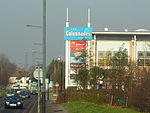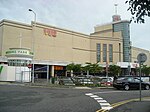Broad Green (ward)

Broad Green is a ward in the London Borough of Croydon, London in the United Kingdom, covering the West Croydon area. Broad Green locality is divided between this ward and Selhurst ward. The ward extends from central Croydon to the south to the boundary with the London Boroughs of Sutton and Merton by Mitcham Common. It includes part of the retail core of Croydon and the northern part of the Purley Way retail area. The ward returns three councillors every four years. At the 2006 election, Stuart Collins, Mike Selva, and Manju Shahul-Hameed were elected, as Labour Party candidates. The population of the Ward at the 2011 Census was 18,652.The ward is in Croydon North constituency, with Steve Reed as Member of Parliament. The ward became smaller in 2018, following boundary changes in Croydon.
Excerpt from the Wikipedia article Broad Green (ward) (License: CC BY-SA 3.0, Authors, Images).Broad Green (ward)
Sumner Road South, London Broad Green (London Borough of Croydon)
Geographical coordinates (GPS) Address Nearby Places Show on map
Geographical coordinates (GPS)
| Latitude | Longitude |
|---|---|
| N 51.38 ° | E -0.114 ° |
Address
Sumner Road South
Sumner Road South
CR0 3LY London, Broad Green (London Borough of Croydon)
England, United Kingdom
Open on Google Maps








